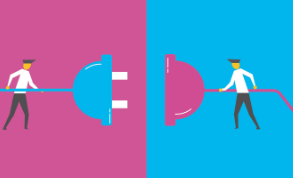Getting connected
‘I had no idea Clare existed.’ So says Lori Edwards Suarez, clinical analyst at Nottinghamshire Healthcare NHS Foundation Trust, of her costing accountant colleague Clare Speed. But, having recently been introduced, the pair are planning a range of projects that will not only dive deep into the costs of the trust’s services, but also the quality these interventions produce to give a more rounded view of services to patients.
Ms Speed was equally unaware of Ms Edwards Suarez’s clinical development unit, though her team works closely with applied information colleagues to extract patient data for National Cost Collection submissions and the deep-dive reviews. ‘As a costing team, we could not function without their continued input,’ she says.
There is clearly a natural intersection between costing and the analysis of clinical data, allowing the outcomes of patient care to be linked to the resources needed to perform that care. But even in the same trust, it’s possible these connections are not being made.
In the case of the Nottinghamshire colleagues, serendipity played a huge role, with both attending a workshop during the HFMA Healthcare Costing for Value Institute 2021 Costing conference. They were introduced by the institute head of costing and value Catherine Mitchell.
Similar challenges
Ms Speed and Ms Edwards Suarez, who was the Association of Professional Healthcare Analysts’ analyst of the year in 2019, faced similar challenges. Both units are small and cover a large trust. Both want to improve the quality of their outputs by engaging clinical volunteers. Both are committed to producing accurate, meaningful information – in itself a way of gaining clinicians’ trust.
The costing team had to adapt its processes during the Covid pandemic to ensure it could communicate with clinical colleagues. ‘It was difficult at the start of Covid-19 as we couldn’t see anyone face to face. However, in the end it worked out better than if we had face-to-face meetings because clinical staff and service managers could join in wherever they were, using Teams,’ Ms Speed says.
Both women believe making it easy for busy clinicians is key to collecting good-quality data. For example, the costing team uses data already collected in the trust’s patient administration system. ‘If you use data already in the system, staff have not had to do anything different, and it has helped push up the quality of the data,’ Ms Speed says.
Ms Edwards Suarez adds that the information being collected must be meaningful to clinicians, allowing them to relate the data to their patients. ‘If it doesn’t work for them, they won’t do it and the data will not be collected,’ she says.
In some cases, this has meant asking for more clinical detail. Staff have not been put off by additional options in the drop-down lists, which now reflect their day-to-day work more closely, and this has improved the quality of the information.
Ms Edwards Suarez says: ‘Both teams were doing similar things. We were looking to improve clinical data, but now we can see what Clare has done successfully, and learn from that. There is a lot of interest in this from clinicians and it would be a shame to duplicate the work.’
Ms Speed takes up the theme. Traditionally, costing in mental health and community services was driven by information required by the reference costs workbook, which concentrated on the efficiency of a service judged by the number of face-to-face contacts that a team completes in a year, she explains.
‘A team that produced a high volume of contacts could be considered more efficient if their costs per contact was lower than other teams in the same service. However, this can be misleading. For example, the number of face-to-face contacts during an individual patient’s episode of care may show that individual patients are being discharged more rapidly in the team that cost more per individual contact, and thus cost less over the individual patient’s episode of care.’
Joining forces with the clinical development unit could add outcomes information to give a fuller picture of what is happening, she adds.
Now they are looking to improve the outputs of both teams through collaboration. ‘The clinical development unit is a great resource to link up with, and hopefully we can build something that is good for the trust and the patients,’ Ms Speed says.
She continues: ‘It’s not just about the pound notes. If you get the patient pathway right, that in itself will lead to efficiencies. We need to be able to understand patient pathways and what’s working for the patient. We collect a lot of data, but we could do with the outcomes information that Lori’s team produces to see how it works in practice, and not just the number of contacts it takes to discharge somebody. It’s about doing the right thing with the resources we have.’
It’s early days, but the teams are already planning to collaborate. ‘Finance has a key part to play, but it’s not about saying the patient is too expensive; it’s about making sure the interventions people are getting benefit them,’ Ms Edwards Suarez says.
The Healthcare Costing for Value Institute is holding its Costing revolution summit on 24 November, focusing on the use of costing information and the importance of working with colleagues to turn data into business intelligence. Email [email protected]
Related content
The Institute’s annual costing conference provides the NHS with the latest developments and guidance in NHS costing.
The value masterclass shares examples of organisations and systems that have pursued a value-driven approach and the results they have achieved.